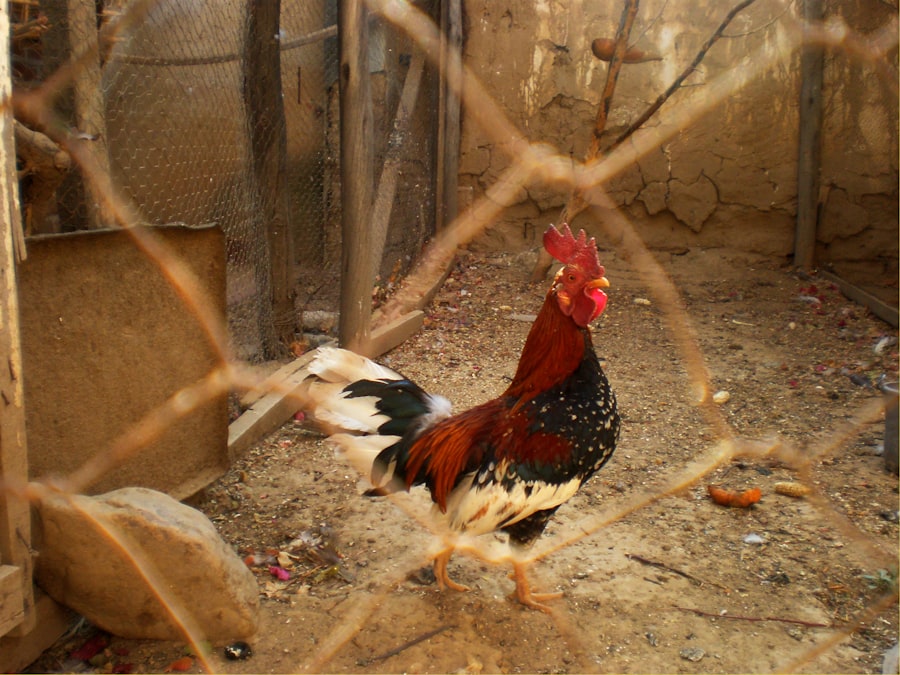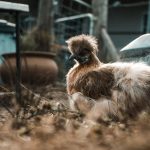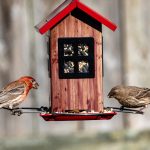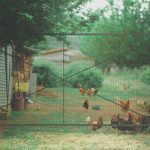Hawks are predatory birds renowned for their exceptional eyesight and efficient hunting abilities. These skilled hunters target small animals, including chickens, often swooping down from above to capture unsuspecting prey. This behavior can result in significant losses for poultry owners, making it essential to understand hawk behavior for effective flock protection.
As diurnal birds of prey, hawks are most active during daylight hours. Their superior vision allows them to detect potential prey from considerable distances. Hawks are characterized by their speed and agility, which contribute to their effectiveness as hunters.
Their typical hunting strategy involves perching in elevated positions to survey the surrounding area for potential targets. Upon identifying prey, they rapidly descend and seize it using their sharp talons. Hawks are also territorial birds, actively defending their domains against perceived intruders, including other raptors.
This territorial behavior can lead to conflicts with poultry owners, as hawks may view chickens as encroaching on their territory. Understanding these hunting and territorial behaviors is crucial for poultry owners to develop and implement effective strategies to safeguard their flocks from hawk attacks.
Table of Contents
- 1 Implementing Physical Barriers: Building Chicken Coops and Enclosures
- 2 Deterrent Tactics: Scare Tactics and Noise-Making Devices
- 3 Utilizing Visual Deterrents: Reflective Objects and Decoys
- 4 Creating Safe Roaming Areas: Utilizing Netting and Fencing
- 5 Supervision and Monitoring: Keeping an Eye on Your Flock
- 6 Seeking Professional Help: Contacting Wildlife and Pest Control Experts
- 7 FAQs
- 7.1 What are some effective methods for keeping hawks away from chickens?
- 7.2 Are there any natural deterrents for hawks?
- 7.3 What are some signs that a hawk may be targeting my chickens?
- 7.4 Is it legal to harm or kill hawks to protect my chickens?
- 7.5 How can I protect my chickens from hawks without harming the hawks?
Key Takeaways
- Hawks are predatory birds that pose a threat to chickens and other small animals, exhibiting behavior such as circling, diving, and swooping.
- Building chicken coops and enclosures with sturdy materials and secure latches can effectively protect poultry from hawk attacks.
- Scare tactics and noise-making devices, such as scarecrows and motion-activated alarms, can deter hawks from targeting chickens.
- Reflective objects like shiny tape and decoys like fake owls can visually deter hawks by creating the illusion of a predator presence.
- Netting and fencing can create safe roaming areas for chickens, providing protection from aerial attacks by hawks.
Implementing Physical Barriers: Building Chicken Coops and Enclosures
Building a Secure Chicken Coop
One of the most effective ways to protect your chickens from hawk attacks is by implementing physical barriers such as chicken coops and enclosures. Building a secure chicken coop is essential for keeping your flock safe from predators, including hawks. A well-built coop will provide a safe and secure environment for your chickens, protecting them from potential threats.
Constructing a Predator-Proof Coop
When constructing a chicken coop, it’s important to use sturdy materials and ensure that it is predator-proof. This means using hardware cloth instead of chicken wire, as it is more durable and can prevent hawks from reaching through and grabbing your chickens. Additionally, make sure that the coop has a secure roof to prevent hawks from swooping down and snatching your chickens.
Providing a Safe Outdoor Space
In addition to a secure coop, it’s also beneficial to provide an enclosed outdoor area for your chickens to roam. This can be achieved by building a chicken run or enclosure that is covered with netting or wire mesh to prevent hawks from accessing your flock. By providing a secure outdoor space, you can allow your chickens to enjoy the benefits of free-ranging while keeping them safe from potential predators.
Effective Protection from Hawk Attacks
Implementing physical barriers such as chicken coops and enclosures is an effective way to protect your flock from hawk attacks and ensure their safety and well-being.
Deterrent Tactics: Scare Tactics and Noise-Making Devices

Deterrent tactics such as scare tactics and noise-making devices can be effective in deterring hawks from targeting your chickens. Hawks are wary birds that can be easily spooked by sudden movements or loud noises. By utilizing scare tactics, you can create an environment that is less appealing to hawks, reducing the likelihood of attacks on your flock.
One effective scare tactic is the use of visual deterrents such as scarecrows or predator decoys. Placing these objects near your chicken coop or in the surrounding area can create the illusion of a threat, causing hawks to think twice before approaching your flock. In addition to visual deterrents, noise-making devices can also be effective in deterring hawks.
Loud noises such as clapping, shouting, or using noise-making devices like air horns or whistles can startle hawks and discourage them from targeting your chickens. By creating a noisy environment, you can make it less appealing for hawks to approach your flock, reducing the risk of attacks. It’s important to vary the scare tactics and noise-making devices to prevent hawks from becoming accustomed to them.
By consistently changing up the deterrent tactics, you can effectively deter hawks and protect your chickens from potential attacks.
Utilizing Visual Deterrents: Reflective Objects and Decoys
Visual deterrents such as reflective objects and decoys can be effective in deterring hawks from targeting your chickens. Hawks are wary birds that can be easily deterred by visual stimuli that signal danger or potential threats. By utilizing reflective objects such as shiny tape or CDs, you can create a visual deterrent that confuses and deters hawks from approaching your flock.
The reflective surfaces can create a disorienting effect for hawks, making it less appealing for them to target your chickens. In addition to reflective objects, predator decoys can also be effective in deterring hawks. Placing decoys such as owl or hawk statues near your chicken coop or in the surrounding area can create the illusion of a threat, causing hawks to think twice before approaching your flock.
By utilizing visual deterrents, you can create an environment that is less appealing to hawks, reducing the likelihood of attacks on your chickens. It’s important to regularly move and change the placement of reflective objects and decoys to prevent hawks from becoming accustomed to them. By consistently utilizing visual deterrents, you can effectively deter hawks and protect your chickens from potential attacks.
Creating Safe Roaming Areas: Utilizing Netting and Fencing
Creating safe roaming areas for your chickens is essential for protecting them from hawk attacks. Utilizing netting and fencing can help create secure outdoor spaces where your chickens can roam freely while being protected from potential predators such as hawks. By covering outdoor areas with netting or wire mesh, you can prevent hawks from accessing your flock while still allowing your chickens to enjoy the benefits of free-ranging.
It’s important to ensure that the netting or fencing is securely installed and covers the entire outdoor area to prevent any gaps that hawks could exploit. In addition to netting and fencing, it’s also beneficial to provide overhead cover for your chickens in their outdoor roaming areas. This can be achieved by installing shade cloth or other coverings that provide protection from aerial predators such as hawks.
By creating safe roaming areas with netting, fencing, and overhead cover, you can allow your chickens to enjoy the outdoors while keeping them safe from potential attacks. Creating secure outdoor spaces is essential for protecting your flock from hawk attacks and ensuring their safety and well-being.
Supervision and Monitoring: Keeping an Eye on Your Flock

Direct Supervision: The First Line of Defense
By keeping a close eye on your chickens, you can quickly identify any signs of potential danger and take action to protect them from predators such as hawks. Regularly checking on your flock throughout the day allows you to observe their behavior and detect any signs of distress or alarm that could indicate the presence of a predator.
Utilizing Monitoring Devices for Added Security
In addition to direct supervision, utilizing monitoring devices such as security cameras or motion-activated lights can help keep an eye on your flock even when you’re not physically present. These devices can provide added security by alerting you to any potential threats or disturbances in the area around your chicken coop.
Staying Vigilant and Proactive
By being vigilant and attentive, you can intervene quickly to deter any potential threats and keep your chickens safe. By staying alert and proactive, you can effectively protect your flock from hawk attacks and ensure their safety at all times.
Seeking Professional Help: Contacting Wildlife and Pest Control Experts
If you’re facing persistent hawk attacks on your flock despite implementing various deterrent tactics, seeking professional help from wildlife and pest control experts may be necessary. Wildlife experts have the knowledge and experience to assess the situation and provide effective solutions for deterring hawks and protecting your chickens. They can offer valuable insights into the behavior of hawks and recommend specific strategies tailored to your unique situation.
Pest control experts can also provide assistance in dealing with hawk attacks on your flock. They have access to specialized tools and techniques for deterring predators such as hawks while ensuring the safety of your chickens. By seeking professional help, you can gain access to expert advice and resources that can help effectively address the threat of hawk attacks on your flock.
In conclusion, protecting your chickens from hawk attacks requires a multi-faceted approach that includes understanding the behavior of hawks, implementing physical barriers, utilizing deterrent tactics, creating safe roaming areas, supervising and monitoring your flock, and seeking professional help when necessary. By combining these strategies, poultry owners can effectively deter hawks and ensure the safety and well-being of their flock. With careful planning and proactive measures, it is possible to protect chickens from hawk attacks and create a secure environment where they can thrive.
If you’re looking for ways to protect your chickens from predators like hawks, you may also be interested in learning about whether guinea fowl can live with chickens. Check out this article to find out more about how guinea fowl can help protect your flock from aerial threats.
FAQs
What are some effective methods for keeping hawks away from chickens?
Some effective methods for keeping hawks away from chickens include using netting or wire mesh to cover the chicken coop, installing scare devices such as reflective tape or predator decoys, and providing overhead cover for the chickens to hide under.
Are there any natural deterrents for hawks?
Some natural deterrents for hawks include planting tall trees or shrubs around the chicken coop to provide cover for the chickens, and allowing the chickens to free-range in areas with dense vegetation where hawks may have difficulty hunting.
What are some signs that a hawk may be targeting my chickens?
Some signs that a hawk may be targeting your chickens include frequent sightings of hawks near the chicken coop, missing or injured chickens, and feathers or other signs of a struggle near the coop.
Is it legal to harm or kill hawks to protect my chickens?
No, it is illegal to harm or kill hawks, as they are protected under the Migratory Bird Treaty Act. Instead, it is recommended to use non-lethal methods to deter hawks from targeting chickens.
How can I protect my chickens from hawks without harming the hawks?
You can protect your chickens from hawks without harming the hawks by using non-lethal deterrents such as netting, scare devices, and providing natural cover for the chickens. It is important to respect the legal protections for hawks while also protecting your chickens.
Meet Walter, the feathered-friend fanatic of Florida! Nestled in the sunshine state, Walter struts through life with his feathered companions, clucking his way to happiness. With a coop that’s fancier than a five-star hotel, he’s the Don Juan of the chicken world. When he’s not teaching his hens to do the cha-cha, you’ll find him in a heated debate with his prized rooster, Sir Clucks-a-Lot. Walter’s poultry passion is no yolk; he’s the sunny-side-up guy you never knew you needed in your flock of friends!







